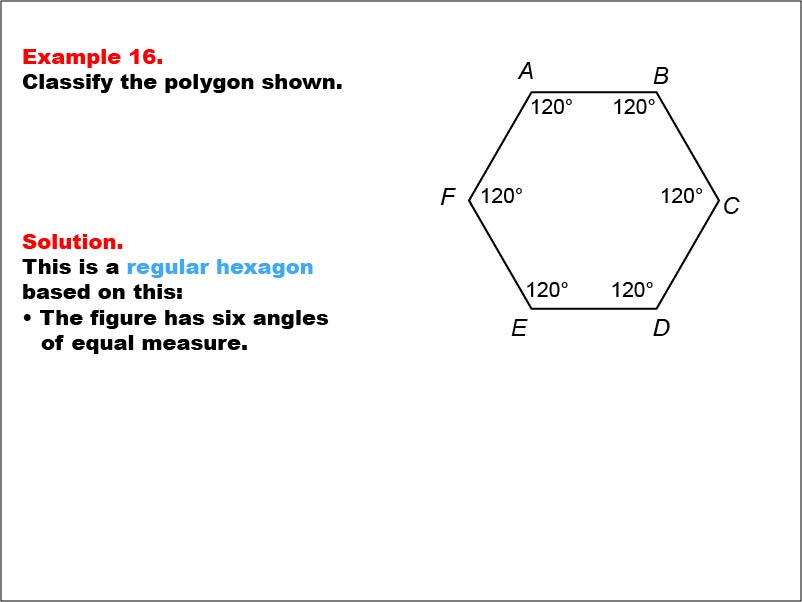
Display Title
Math Example--Polygons--Polygon Classification: Example 16
Display Title
Math Example--Polygons--Polygon Classification: Example 16

Topic
Polygons
Description
This example showcases a hexagon with all interior angles labeled as 120 degrees, indicating equal angles. It demonstrates that a regular hexagon can be identified not only by equal side lengths but also by equal angle measures, reinforcing the dual criteria for regularity in polygons.
Polygon classification is a fundamental concept in geometry that helps students analyze and categorize shapes based on their properties. This collection of examples provides a comprehensive look at various aspects of regular hexagons, emphasizing both side length and angle measure as defining characteristics.
Exposure to multiple worked-out examples is vital for students to develop a thorough understanding of polygon classification. Each example presents a unique perspective, allowing students to explore various ways of identifying regular polygons and reinforcing the concept through diverse representations.
Teacher's Script: Notice the angle measures in this hexagon, class. What does it mean when all angles are 120 degrees? How does this information help us classify the polygon? Let's discuss why regular hexagons always have 120-degree angles and how this relates to the total angle sum of a hexagon.
For a complete collection of math examples related to Polygons click on this link: Math Examples: Polygon Classification Collection.
| Common Core Standards | CCSS.MATH.CONTENT.5.G.B.3, CCSS.MATH.CONTENT.7.G.B.6 |
|---|---|
| Grade Range | 6 - 8 |
| Curriculum Nodes |
Geometry • Polygons • Definition of a Polygon |
| Copyright Year | 2013 |
| Keywords | polygons, classification |